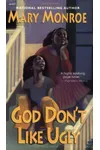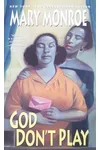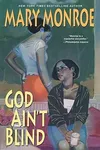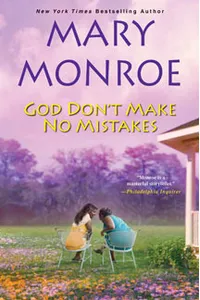Step into the vibrant, heartfelt world of God Don’t Like Ugly, where the streets of civil rights-era Ohio pulse with stories of resilience, friendship, and redemption! This captivating six-novel series by New York Times bestselling author Mary Monroe follows Annette Goode, a young African American woman whose journey from a traumatic childhood to self-discovery has touched countless readers. With its rich characters and unflinching look at life’s highs and lows, this series is a gem in contemporary African American literature.
Monroe’s storytelling weaves humor, heartache, and hope, pulling you into Annette’s world as she navigates abuse, love, and the power of truth. Whether you’re drawn to historical fiction or tales of personal triumph, God Don’t Like Ugly offers a page-turning escape that’s as thought-provoking as it is entertaining.
How God Don’t Like Ugly Began
Mary Monroe, a self-taught writer and daughter of Alabama sharecroppers, poured her observations of life into her writing from a young age. After her debut novel, The Upper Room, in 1985, she struck gold with God Don’t Like Ugly in 2000. Inspired by the complexities of African American communities in the mid-20th century, Monroe crafted a story that blended raw honesty with a hopeful tone. Her own experiences growing up in Alabama and Ohio shaped the series’ authentic setting and vivid characters, earning her a PEN/Oakland Josephine Miles Award for the first novel.
The Heart of God Don’t Like Ugly
The series kicks off with God Don’t Like Ugly, where young Annette Goode, shy and overweight, harbors a dark secret: she’s being abused by her mother’s boarder, Mr. Boatwright. Her life changes when Rhoda Nelson, a dazzling and worldly girl, becomes her friend, offering courage and a glimpse of a brighter world. The sequel, God Still Don’t Like Ugly, follows Annette into adulthood as she seeks reconciliation with her estranged father and grapples with lingering scars. Later books like God Don’t Play and God Ain’t Blind delve deeper into Annette’s relationships, including her rocky marriage and rekindled bonds with childhood friends like Pee Wee.
Monroe’s series shines through its themes of resilience, redemption, and the liberating power of truth. Set against the backdrop of 1950s and 1960s Ohio, the novels capture the social tensions of the civil rights era while exploring universal struggles like self-esteem and forgiveness. Monroe’s conversational style and colorful characters—like Rhoda’s eccentric family, including the surly Granny Goose—make every page feel alive, blending humor with hard-hitting realities.
Why God Don’t Like Ugly Resonates
God Don’t Like Ugly has left a lasting mark on African American literature, praised for its authentic portrayal of Black life and its nuanced characters. Readers connect with Annette’s journey from victim to survivor, finding inspiration in her strength. The series’ blend of wit and wisdom has earned Monroe comparisons to Zora Neale Hurston, with fans on platforms like Goodreads calling it a “page-turner” for its unpredictable twists. Its exploration of heavy topics like abuse and betrayal, handled with care and hope, keeps it relevant for modern audiences.
- First published: 2000 (God Don’t Like Ugly)
- Number of books: 6
- Awards: PEN/Oakland Josephine Miles Award (2001)
Ready to dive into Annette’s unforgettable story? Grab God Don’t Like Ugly and lose yourself in Mary Monroe’s soulful, spirited world!





